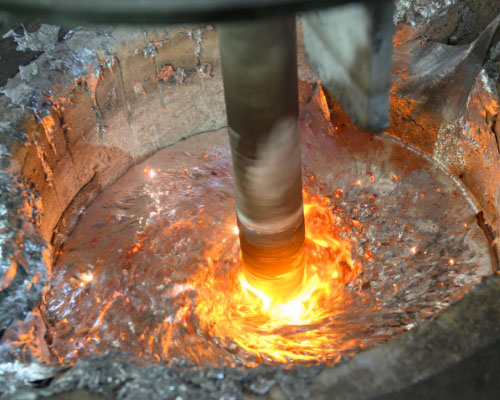The rotary degassing effect of aluminum liquid on the density in the production process is studied to ensure the product quality can be effectively controlled in the production process.
After melting and refining of die casting aluminum alloy (ADC12), the influence of water inlet position, adding time before and after refining agent, nitrogen flow rate of rotary degassing and rotating speed of graphite rotary rod were analyzed. The density of liquid aluminum was measured and analyzed.
After degassing, the degassing effect of aluminum liquid at different positions in the subcontract is inconsistent, and the worst is near the turntable.
The flow rate of nitrogen has a certain influence on the position of bubbles. Large flow bubbles further diffuse, but cause more serious stirring of aluminum liquid, which will cause hidden danger of safety production.
This speed has a great influence on the degassing effect of liquid aluminum. High rotating speed can ensure sufficient gas diffusion and prevent liquid aluminum from rolling.

The refining flux can’t be used to refine the liquid aluminum under the action of rotating degassing, so the surface of liquid aluminum can be treated by scum. It is suggested that the surface aluminum slag should be treated with slag remover. According to the specification of refining agent, the service temperature of refining agent is 700-750 ℃, and the service temperature of deslagging degasser is no less than 680 ℃. The high temperature of liquid aluminum is required for refining agent, which is difficult to control on site.
The rotating speed and nitrogen flow rate should be used at the same time to ensure the degassing effect, and the aluminum liquid will not roll and oxidize. The flow rate of 15L / min at 400R / min can meet the requirements.
In the degassing process, the rolling and splashing of molten aluminum will affect the degassing and oxidation of molten aluminum. After degassing, the surface aluminum slag and sample density can reflect the degassing effect.

